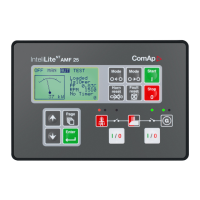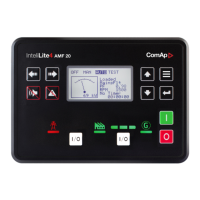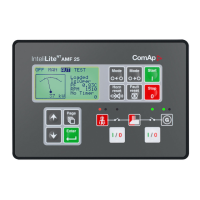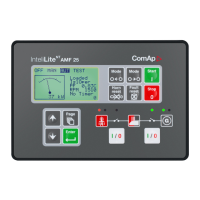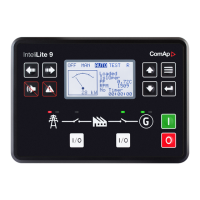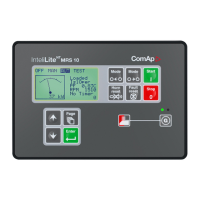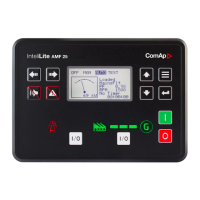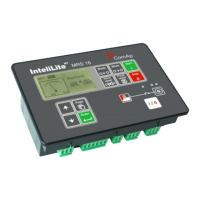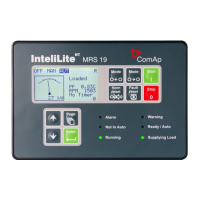InteliLite Global Guide
157
SMS
Event SMS
The InteliLite controller equipped with the CM-GPRS or CM-4G-GPS communication module is able to send
Event SMS according to the setting of setpoint:
Event Message (page 398)
Note: Firstly setpoint Telephone Number 1 (page 392) has to be adjusted.
The following events can be received by mobile phone:
Engine Start/Stop
Manual Start/Stop
Remote Start/Stop
AMF Start/Stop (as Automatic Mains Failure Start/Stop)
Test Start/Stop Gen-set
Mains Fail
Mains Returned
Load on Mains
Load on Gen-set
Test On Load
Message structure:
Genset Name (hh:mm:ss dd.mm.yyyy)
hh:mm:ss Mains Fail
hh:mm:ss AMF Start
hh:mm:ss Load on Genset
hh:mm:ss Mains Returned
hh:mm:ss Load on Mains
hh:mm:ss AMF Stop
Alarm SMS
The InteliLite controller equipped with the CM-GPRS or CM-4G-GPS communication module is able to send
Alarm SMS according to the setting of setpoints:
Wrn Message (page 399)
Sd Messages (page 399)
BOC Message (page 399)
Note: Firstly setpoint Telephone Number 1 (page 392) has to be adjusted.
Message structure:
Gen-set Name
AL=(Alarm 1, Alarm 2, Alarm x)
Note: Asterisk means that alarm is unconfirmed and exclamation mark means that alarm is active.
